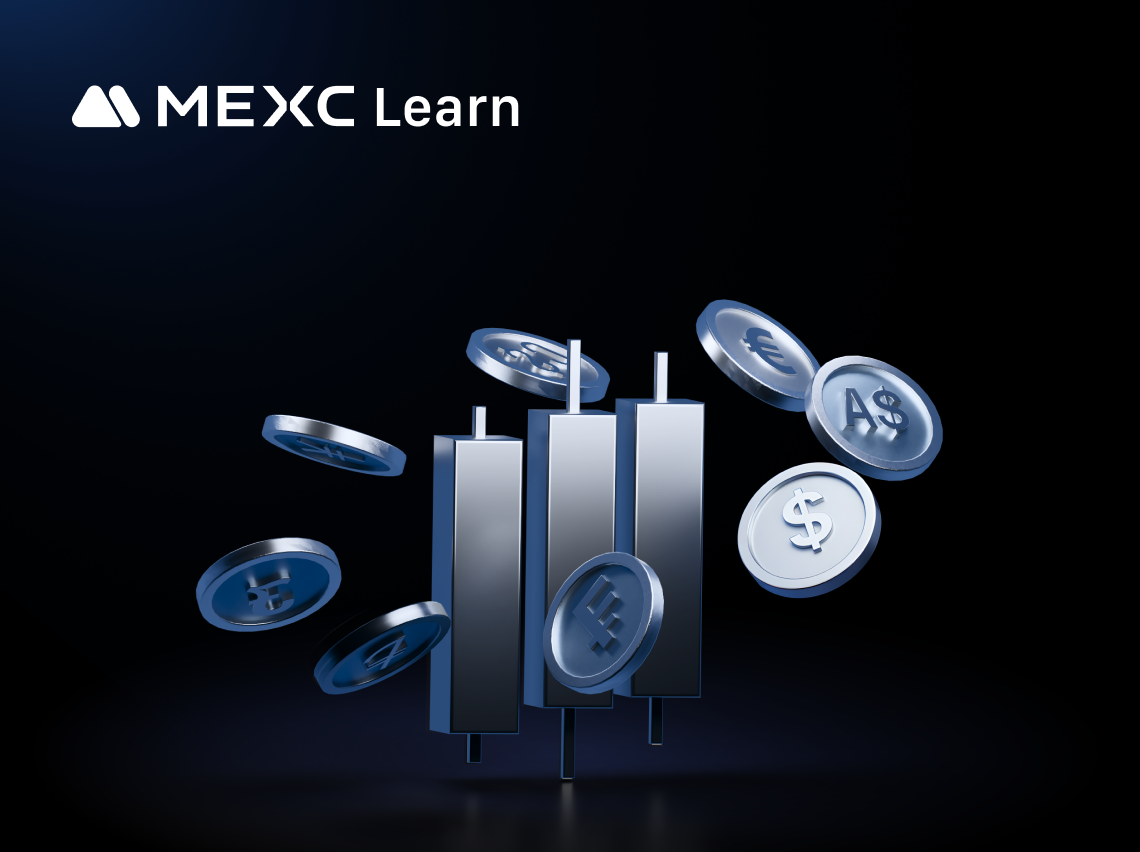What Is Bitcoin Power Law? Model, Chart & Calculator Guide
Bitcoin’s price movements aren’t random chaos—they follow a precise mathematical pattern. Astrophysicist Giovanni Santostasi discovered that Bitcoin follows a power law, the same type of natural scaling found in earthquakes, city growth, and animal metabolism.
This scientific model has accurately predicted Bitcoin’s major moves since its introduction in 2018. Most remarkably, it forecasts Bitcoin reaching $210,000 by January 2026.
Unlike speculation-based predictions, the bitcoin power law uses physics principles to understand cryptocurrency markets. This guide explains how the model works, what it predicts, and why it matters for your investment decisions.
Understanding Bitcoin’s mathematical patterns is crucial for investors. For fundamental Bitcoin knowledge and broader market context, refer to our comprehensive Bitcoin guide.
Key Takeaways
- Bitcoin’s price follows a mathematical power law with 5.8 growth exponent, demonstrating predictable long-term scaling rather than random market behavior.
- The model accurately projected Bitcoin’s approach to $100,000 in late 2024 and forecasts $210,000 by January 2026 based on network growth patterns.
- Power law analysis shows Bitcoin behaves more like a natural phenomenon than a traditional financial asset, with value increasing proportionally to users squared.
- Scale invariance properties suggest the growth pattern will continue, with long-term projections indicating $1 million by 2033 following mathematical trajectories.
- While the model provides scientific insights into Bitcoin’s development, responsible investors should use it alongside other analysis tools and risk management strategies.
What Is Bitcoin Power Law?
The bitcoin power law is a mathematical model that describes how Bitcoin’s price grows over time. Power laws appear everywhere in nature—from the size of earthquakes to how cities expand. These aren’t coincidences; they represent fundamental scaling principles in complex systems.
Giovanni Santostasi, a former astrophysics professor who studied gravitational waves, recognized these same patterns in Bitcoin’s price data. His background in analyzing cosmic phenomena gave him unique insights into Bitcoin’s behavior.
The power law bitcoin theory treats cryptocurrency more like a natural phenomenon than a traditional financial asset. This perspective has proven remarkably accurate over Bitcoin’s 15-year history.
To understand how Bitcoin evolved to follow these mathematical patterns, read our complete Bitcoin history, tracing its development from experimental project to mathematical phenomenon.
How Power Laws Work in Nature
Power laws follow a simple mathematical relationship: one value scales as a fixed power of another. In nature, we see this everywhere:
- Mammal metabolic rates scale with body mass to the power of 0.75
- Earthquake frequencies follow power law distributions
- City populations and word frequencies in languages exhibit these patterns
- Even the distribution of wealth follows power law scaling
Santostasi discovered that Bitcoin’s price, hash rate, and user adoption all demonstrate similar mathematical relationships.
The Bitcoin Power Law Formula
The core bitcoin power law formula is elegantly simple:
Price = A × (days from Genesis Block)^5.8
Where:
- A is a constant (approximately 10^-17)
- 5.8 represents Bitcoin’s specific growth exponent
- Days are counted from Bitcoin’s Genesis Block (January 3, 2009)
When you plot Bitcoin’s price history on a log-log scale, it forms a remarkably straight line spanning over 15 years. This linear pattern suggests Bitcoin’s growth follows natural scaling laws rather than random market forces.
*BTN- Apply Power Law Analysis – Trade BTC Now&BTNURL=https://www.mexc.com/price/BTC *
How Bitcoin Power Law Model Works?
Network Effects Drive Growth
The btc power law operates through interconnected feedback loops that create predictable growth patterns.
- Metcalfe’s Law Connection: Bitcoin’s value increases with the square of its users. As more people adopt Bitcoin, the network becomes exponentially more valuable. Research shows this relationship holds when examining Bitcoin’s address growth and price correlation.
- Mining Security Feedback: Higher Bitcoin prices attract more mining power, which enhances network security. Improved security draws additional users and institutional adoption, creating a self-reinforcing cycle.
The Mathematics Behind Price Growth
Why 5.8 Matters: This exponent represents Bitcoin’s “Goldilocks zone” of growth—faster than linear progression but more sustainable than exponential expansion. The 5.8 power creates substantial appreciation while maintaining mathematical stability.
Scale Invariance: The power law exhibits a crucial property called scale invariance. The growth pattern remains consistent across different time scales and price levels. This allows for reliable long-term predictions and suggests the pattern will continue as Bitcoin scales globally.
Hash Rate Relationships: The bitcoin power law model shows hash rate grows proportionally to price squared. This mathematical relationship explains why mining follows Bitcoin’s price so closely.

Bitcoin Power Law Price Predictions
Short-Term Forecasts (2024-2025)
Current bitcoin power law price prediction models offer specific targets based on 15 years of historical data.
The model suggested Bitcoin would approach $100,000 before January 2025. As of late 2024, Bitcoin’s performance tracks closely to these predictions, validating the power law’s accuracy for near-term forecasting.
Recent price action demonstrates the model’s reliability. When Bitcoin reached new highs in 2024, these movements aligned perfectly with power law projections.
Major Cycle Predictions
Santostasi’s bitcoin power law model projects a cycle peak of approximately $210,000 in January 2026. This prediction accounts for Bitcoin’s four-year halving cycles and historical bubble patterns.
Following the 2026 peak, the model anticipates a correction to around $60,000 later in 2026. This isn’t a crash—it’s a natural return to the power law baseline.
The model identifies $35,000 as a short-term minimum where Bitcoin should find strong support based on historical patterns.
Long-Term Projections
The most striking prediction suggests Bitcoin reaching $1 million by 2033. While extraordinary, this represents the natural continuation of Bitcoin’s mathematical growth trajectory.
This isn’t speculation—it’s what the numbers suggest when you extend the power law forward. The 15-year track record gives confidence in these long-term projections.
Power law analysis works best when combined with fundamental understanding of different asset classes. Compare Bitcoin’s mathematical growth to traditional investments in our comprehensive BTC vs everything guide.
*BTN- Apply Power Law Analysis – Trade BTC Now&BTNURL=https://www.mexc.com/price/BTC *
Bitcoin Power Law Chart Guide
Bitcoin power law chart analysis requires understanding logarithmic scaling and trend lines. These visual tools help investors assess Bitcoin’s current position relative to historical patterns.
The bitcoin long term power law creates upper and lower boundaries that have contained Bitcoin’s price throughout its history.
- Lower Band: Strong support levels where Bitcoin historically finds buying interest
- Upper Band: Potential resistance indicating overvaluation or bubble conditions
- Center Line: The main power law trend representing fair value
Current Market Position Analysis
Recent analysis shows Bitcoin trading within normal parameters of the power law corridor. This positioning suggests the current market cycle follows expected patterns without significant deviation.
When Bitcoin trades near the lower power law band, this has historically represented exceptional buying opportunities. Conversely, prices approaching the upper band often coincide with market peaks.
The power law chart acts like a GPS for Bitcoin’s price journey, showing whether you’re ahead of schedule, behind, or right on track.

Bitcoin Power Law Calculator Guide
Available Calculation Tools
Several bitcoin power law calculator tools democratize access to sophisticated mathematical analysis previously available only to researchers.
Websites like Bitbo.io offer interactive btc power law calculator tools that plot current prices against historical trends. These calculators update in real-time, showing Bitcoin’s position within the power law framework.
Most basic power law calculators are free, while advanced tools with additional features may require subscriptions.
How to Use Power Law Calculators
Step-by-Step Process:
- Access a reputable bitcoin power law calculator
- Input your target date or price level
- Review the probability ranges and confidence intervals
- Compare current prices to historical trend lines
- Use the analysis for investment timing decisions
Most calculators display confidence intervals rather than precise predictions. Look for probability ranges and understand the margin of error in any projection.
Practical Investment Applications
Dollar-Cost Averaging: Use power law analysis to optimize your regular Bitcoin purchases by identifying when prices deviate significantly from trend lines.
Timing Major Purchases: The calculator helps assess whether current prices represent good value relative to long-term trends.

Benefits and Limitations
Key Advantages
- Mathematical Foundation: The bitcoin power law theory provides a scientific basis for Bitcoin analysis, reducing reliance on speculation or emotional decision-making.
- Track Record: The model’s track record since 2018 gives confidence in its analytical framework. The model has demonstrated consistent performance.
- Institutional Appeal: The mathematical rigor appeals to institutional investors who need quantitative justification for Bitcoin allocations.
- Long-Term Perspective: The model encourages patience and long-term thinking rather than short-term trading emotions.
Important Limitations
- Assumptions and Dependencies: The model assumes continued adoption, technological stability, and absence of major disruptions. These assumptions may not hold indefinitely.
- External Factors: The power law doesn’t account for regulatory crackdowns, macroeconomic catastrophes, or technological failures that could disrupt the mathematical relationship.
- Past Performance Warning: While 15 years of data is substantial, past performance cannot guarantee future results, especially as Bitcoin’s market capitalization grows.
Responsible Usage Guidelines
- One Tool Among Many: Financial experts recommend using the power law alongside other analysis methods rather than relying on it exclusively.
- Risk Management: The model works best for long-term strategic planning rather than short-term trading decisions.
- Position Sizing: Use power law analysis to inform position sizes and investment timing, but never risk more than you can afford to lose.
While power law provides mathematical insights, understanding Bitcoin’s underlying technology is equally important. Learn how Bitcoin actually works in our complete technical guide.
*BTN- Apply Power Law Analysis – Trade BTC Now&BTNURL=https://www.mexc.com/price/BTC *
Comparing Power Law to Other Models
Power Law vs. Stock-to-Flow
While Stock-to-Flow focuses on Bitcoin’s supply scarcity, the bitcoin power law model emphasizes network growth and adoption patterns.
Both models have shown accuracy, but the power law provides longer historical validation and more nuanced cycle analysis.
Some analysts use both models together for more comprehensive analysis.
Integration with Other Models
- Rainbow Chart Combination: Advanced investors combine power law analysis with Rainbow Chart valuations to create multi-dimensional assessment tools.
- Hybrid Approaches: Using multiple mathematical frameworks provides more robust risk management by triangulating different analytical approaches.
- Traditional Analysis Gaps: Conventional financial models often fail with Bitcoin because they assume traditional market relationships. The power law acknowledges Bitcoin’s unique properties.

Real-World Performance and Validation
Historical Accuracy Record
The Giovanni Bitcoin Power Law Model has demonstrated remarkable precision across multiple market cycles, lending credibility to future projections.
Key validation points include accurate identification of cycle support levels and current price tracking that aligns closely with power law fair value estimates.
When Bitcoin reached cycle lows around $15,500 in 2022, this aligned closely with power law support levels, validating the model’s downside protection analysis.
Bitcoin’s 2024 performance has tracked closely to power law predictions, with the approach to $100,000 occurring within expected timeframes.
Growing Institutional Recognition
Increasing numbers of institutional investors reference power law analysis in their Bitcoin research and investment decisions.
Universities and research institutions are studying the power law phenomenon as part of cryptocurrency and complex systems analysis.
The model’s mathematical rigor has helped bring scientific credibility to Bitcoin price analysis.
*BTN- Apply Power Law Analysis – Trade BTC Now&BTNURL=https://www.mexc.com/price/BTC *
Conclusion
The bitcoin power law represents a fascinating intersection of physics, mathematics, and financial markets. Giovanni Santostasi‘s discovery offers a scientifically-grounded framework for understanding Bitcoin’s extraordinary growth potential.
The power law suggests that understanding mathematical growth patterns may be more valuable than trying to time short-term market movements. For long-term investors, the model provides a rational framework for evaluating Bitcoin’s role in a diversified portfolio.
The elegance of the power law lies in its simplicity—complex market behaviors reduced to fundamental mathematical relationships. In a world of financial uncertainty, perhaps the most reliable guide is the timeless language of mathematics itself.
Ready to Explore Bitcoin Further?
This article provides specialized insights into Bitcoin Power Law. For a complete understanding of Bitcoin’s technology, market dynamics, and investment strategies, explore our comprehensive Bitcoin (BTC) guide – your one-stop resource for everything Bitcoin-related.
Popular Articles

How to Mine Ethereum? What You Need to Know About Ethereum Mining
The cryptocurrency world changed forever when Ethereum mining became impossible on September 15, 2022. If you’re searching for how to mine Ethereum in 2025, you’re not alone—but the answer might surpr

ETH Gas Fees: Complete Guide to Ethereum Gas Tracker & Calculator
Ethereum gas fees have experienced their most dramatic transformation in 2025, with costs plummeting by an dramatic 95% following the Dencun upgrade. What once cost users $86 for a simple swap now ave

FAQ on Liquidation for Futures Trading
1. What Is Liquidation?Liquidation, also referred to as forced closure or margin call, occurs when the platform automatically closes a user's position. On MEXC, the maintenance margin rate (MMR) is th

Who is Vitalik Buterin? The Complete Guide to Ethereum’s Founder
Vitalik Buterin has officially reclaimed his status as a cryptocurrency billionaire in 2025, with his portfolio now valued at approximately $1.04 billion as Ethereum soars past $4,200. The 31-year-old
Hot Crypto Updates

What are Stablecoins(USDT/USDC)? A Digital Safe Haven in Times of Currency Turbulence
Key TakeawaysWars, inflation, and currency volatility are eroding the value of many local currencies, prompting people to turn to stablecoins as a store of value.USDT and USDC are two major USD-pegged

What Is Bitcoin? A Comprehensive Analysis of the Bitcoin (BTC) Journey, Market Comparison & Investment Case
Bitcoin Explained — Key Concepts and OriginThe cryptocurrency Bitcoin (BTC) is the pioneering digital asset launched in January 2009 by the pseudonymous Satoshi Nakamoto. It introduced a peer-to-peer

ASTER Token Analysis | Tokenomics, Market Insights & Trading Guide on MEXC
What Is ASTER Token?The ASTER token is the native asset of Aster Network, a next-generation decentralized exchange (DEX) infrastructure built to provide cross-chain liquidity and seamless interoperabi

South Park Sucks Now (SPSN) Price Prediction: Market Forecast and Analysis
Understanding the price prediction of South Park Sucks Now (SPSN) gives traders and investors a forward-looking perspective on potential market trends. SPSN price forecasts aren't guarantees, but they
Trending News

Ethereum unveils roadmap focusing on scaling, interoperability, and security at Japan Dev Conference
The post Ethereum unveils roadmap focusing on scaling, interoperability, and security at Japan Dev Conference appeared on BitcoinEthereumNews.com. Key Takeaways Ethereum’s new roadmap was presented by

XRP price sees bearish divergence despite DEX volume surge
XRP is facing pressure as price weakens while on-chain activity rises, creating a divergence that leaves traders watching key support levels closely. XRP is trading at $2.25, down 1.8% in the past 24

Understanding Bitcoin Mining Through the Lens of Dutch Disease
There’s a paradox at the heart of modern economics: sometimes, discovering a valuable resource can make a country poorer. It sounds impossible — how can sudden wealth lead to economic decline? Yet thi

Crypto Treasury Firms at Play in Market Dip, Expert Warns
Certainly! Here’s the rewritten article with an added introduction, optimized SEO, and improved readability, while maintaining the original HTML structure: Recent declines in the cryptocurrency market
Related Articles

How to Mine Ethereum? What You Need to Know About Ethereum Mining
The cryptocurrency world changed forever when Ethereum mining became impossible on September 15, 2022. If you’re searching for how to mine Ethereum in 2025, you’re not alone—but the answer might surpr

ETH Gas Fees: Complete Guide to Ethereum Gas Tracker & Calculator
Ethereum gas fees have experienced their most dramatic transformation in 2025, with costs plummeting by an dramatic 95% following the Dencun upgrade. What once cost users $86 for a simple swap now ave

FAQ on Liquidation for Futures Trading
1. What Is Liquidation?Liquidation, also referred to as forced closure or margin call, occurs when the platform automatically closes a user's position. On MEXC, the maintenance margin rate (MMR) is th

Who is Vitalik Buterin? The Complete Guide to Ethereum’s Founder
Vitalik Buterin has officially reclaimed his status as a cryptocurrency billionaire in 2025, with his portfolio now valued at approximately $1.04 billion as Ethereum soars past $4,200. The 31-year-old
